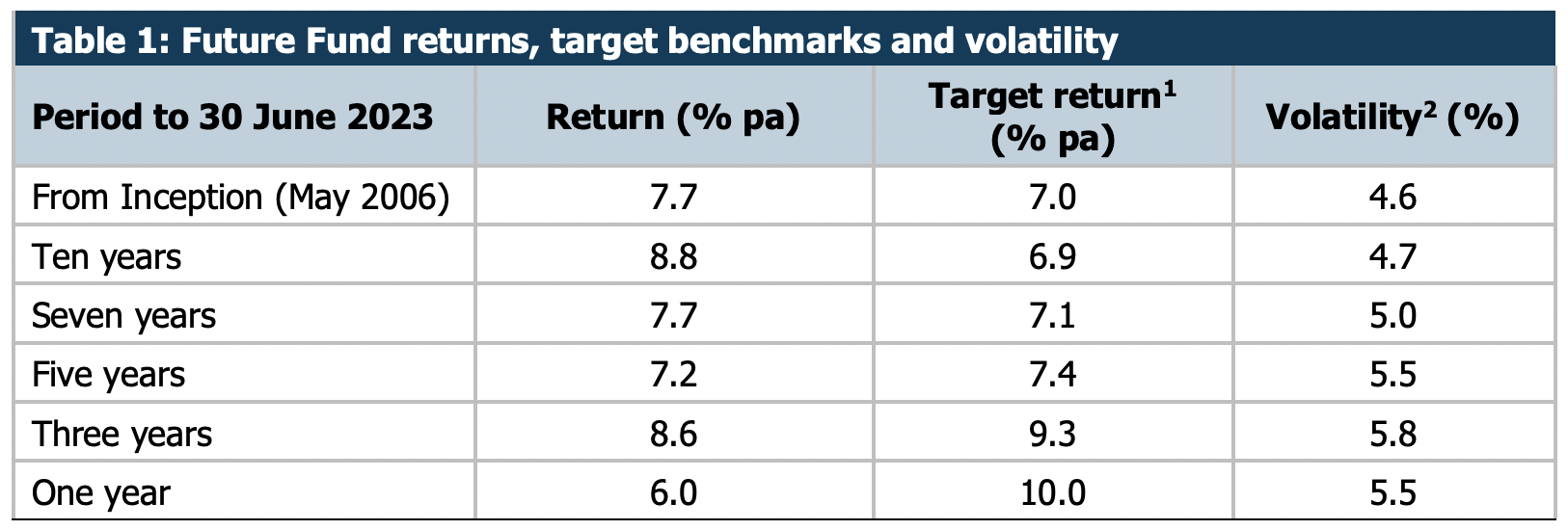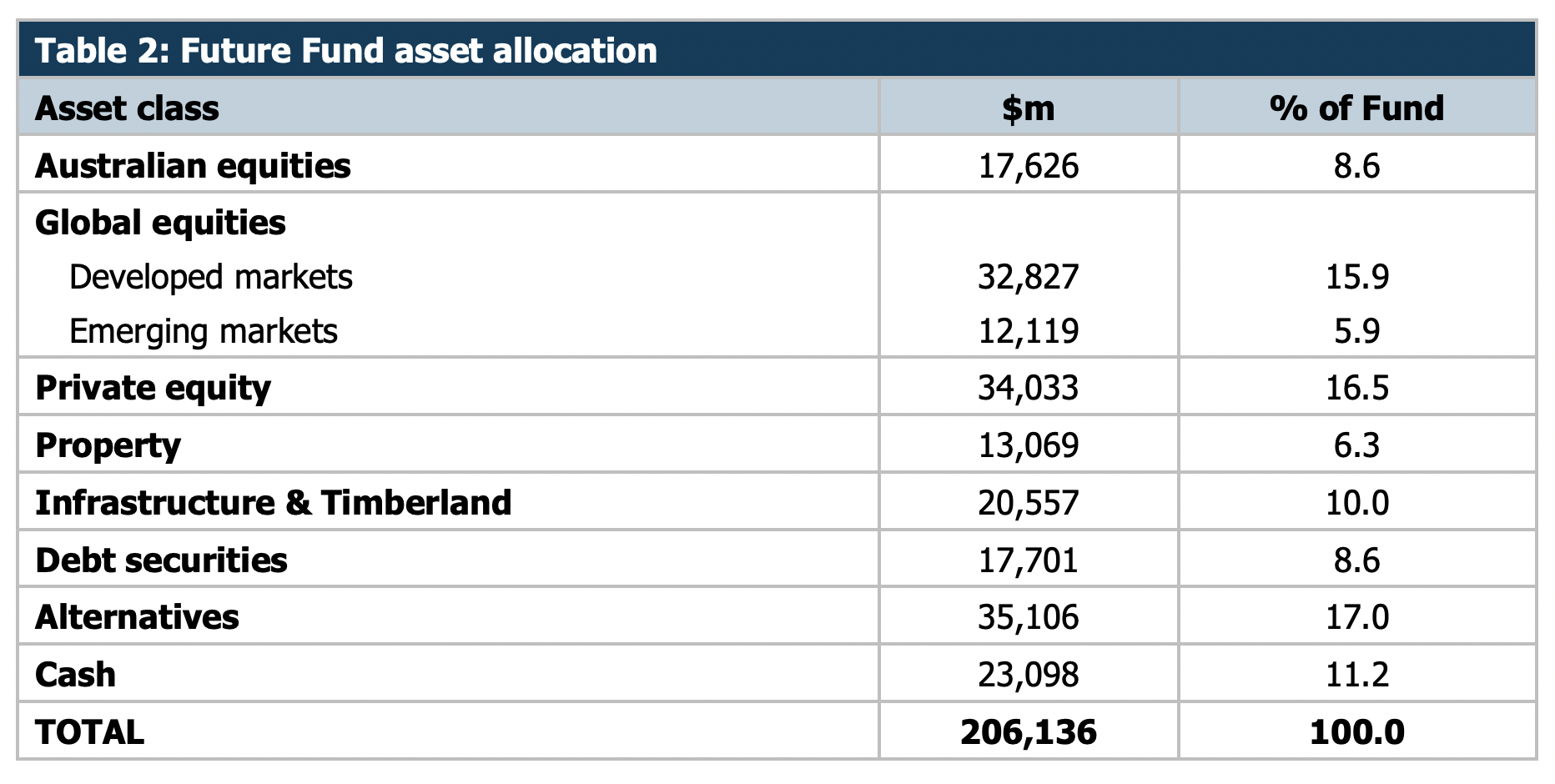Costello not convinced by ‘goldilocks’ scenario as Future Fund adopts a defensive stance
Officially, the Future Fund exists to grow Australia's wealth. Ostensibly, it exists to fund the superannuation obligations of Australia's public servants.
With more than two million public sector employees at last count, it's a heavy burden. Nowhere else, arguably, is risk and reward such a consequential balancing act. (I'll return to this risk piece later).
The investment industry looks to the Future Fund as a kind of sober Northern Star, free of the multiple expansion psychology endemic of Wall Street.
It's just released its portfolio update for 30 June 2023. This wire will identify its recent performance, allocation changes, and the key investment themes identified by its leadership.
Reliable performance
Historically, the fund has delivered stable and consistent returns, prompting some pundits to suggest it should replace the superannuation industry entirely.
The fund used to target CPI+ 4.5% to 5.5%, but that's since been pared back to CPI + 4% to 5% per annum over the long term.
And it's achieved that over the long term - 7.7% per annum since inception. The year to June 30 has been tough, though. While the target return was 10% (due to inflation), the fund only managed 6%.
In dollar terms, it's turned an initial 2006 contribution of $60.5 billion into $206.1 billion today, without any further contributions.

An untraditional approach
One of the most striking things about the Future Fund's allocation is its relatively light weighting to Aussie equities, which make up just 8.6% of the fund (although this is up from 8.1% 12 months ago). Global equities, meanwhile, make up almost 22%.
Debt investments sit at 8.6%.
It's not a traditional 60/40 portfolio of stocks and bonds. Clearly, it's looking to generate return elsewhere.
In its place is a heavy weighting to asset classes such as private equity (16.5%) and alternatives (17%).
This unconventional approach to asset allocation isn't new for the Future Fund.
"Traditional approaches have delivered strongly, but it is doubtful they are fit for purpose in the future," it stated in a paper published last December titled The Death of Traditional Portfolio Construction?
"As the outlook for traditional beta has declined and the toolkit for defending portfolio returns has shrunk, institutional investors need to reconsider what they invest in, where they invest, and how they make decisions. A deeper understanding of more nuanced and difficult risks is needed and history is an imperfect guide to how to do this."

Key insights
The June 30 update features commentary by its board chair, the Honourable Peter Costello AC, and its CEO Dr Raphael Arndt. They've been organised into themes below.
As you'll see, it all boils down to a lot of uncertainty, unpriced risk, and the need to think outside the box when generating return.
The outlook for returns is less attractive than the past decade
“Favourable investment conditions that drove markets in recent decades have been undergoing profound changes" - Arndt.
"With persistent higher inflation we expect real returns to investors, will remain below those of the past decade” - Costello.
“Markets have been under-pricing the significant economic and geopolitical risk that we have anticipated" - Arndt.
Don’t expect rates to start falling any time soon
“Inflation persisted through the financial year and while there are signs it may have passed the peak, it remains elevated and well above the 2-3% range targeted by the Reserve Bank of Australia" - Costello.
“Data shows wage and price pressures that contribute to inflation remain strong, leaving open the possibility that inflation will continue and the path to lower interest rates remains a way off," - Costello.
The full impact of interest rate hikes are yet to be seen
“As interest rate hikes took effect the global and Australian economies slowed and new challenges emerged for long term drivers of growth" - Costello.
“Share markets were surprisingly strong through the second half of the financial year as they appeared to be pricing in a “Goldilocks” scenario. Whilst this would be a welcome outcome we see risks on the downside." - Costello.
“The economic outlook and the direction of inflation and interest rates make investment returns less certain." - Arndt.
Investing outside Australia has paid off
“The Future Fund delivered a positive return of 6.0% for the financial year, after a difficult 2021-22. This reflected the portfolio’s wider diversification across international markets and private assets." - Costello.
So has an unconventional asset allocation
“We have made significant changes to the portfolio over the past two years and this means that our holdings and returns will look increasingly different from those of other asset owners”. - Arndt.
“Although risk assets are under-pricing some of the threats we see, higher interest rates are making it easier to generate meaningful returns from a diversified range of assets such as that owned by the Future Fund.” - Arndt.
1 topic

